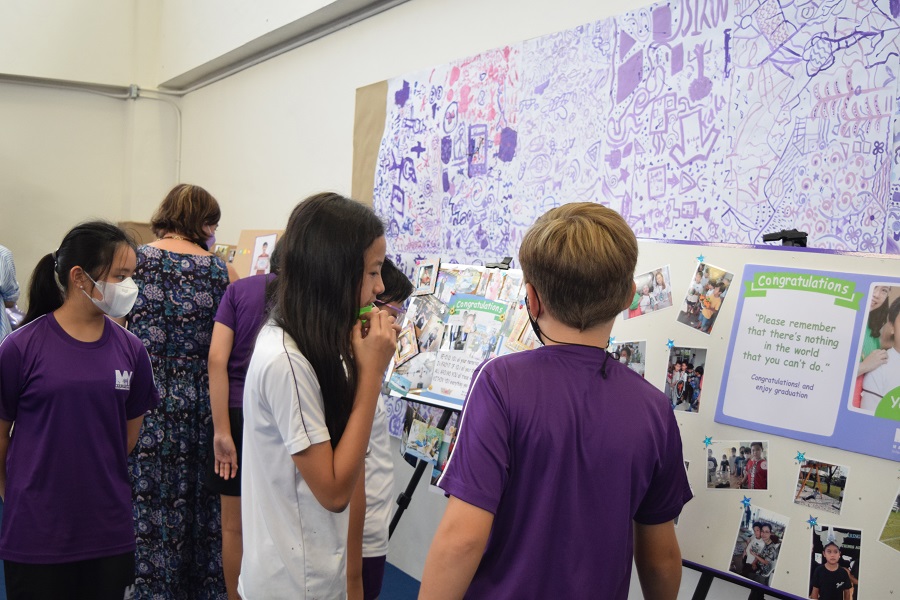A TIME FOR THE SCHOOL TO CELEBRATE
The final year of primary school had its challenges for our 5th graders, yet they faced these challenges with resilience and quiet determination. As a class, they have been a part of the MYIS community for between 10 years (Pan joining our Trust and Caring) and 3 months (Putt, who joined us in April). 
As MYIS moves into its next chapter as a Middle School, some things are changing. One of the biggest changes is that our Grade 5 students are no longer “graduating” from MYIS and moving onto a new school! Thursday, June 2, was another “first” for MYIS as we had our first “PYP Moving Up Celebration”. The PYP Moving Up Celebration was a true community collaboration with all school groups involved. The parents worked together with the PLT and Grade 5 Team to organise an event to celebrate our 5th graders in a genuine and heartfelt way. Here is who everyone contributed to the event:
PARENTS:
For the parents of our 5th grade students, it was important that they signify to their children how proud they are of all that they accomplished. From the celebratory lunch to the balloon decorated photo booth, they came together as an example of what can be achieved with solid parent partnerships and teamwork.
STUDENTS:
Ms Prom and the art team worked with students from across the school throughout the week to create unique mobiles, streamers, and banners to be used to decorate the school. Using MYIS colours, the students painted and decorated, understanding that the purpose was to celebrate how proud we are as a community of the 5th grade students. On the ceremony day, the students from Trust & Caring to Grade 4 lined the pathway, cheering the 5th graders as they returned to their classroom in a celebration parade. Banners, posters and loud cheers filled the campus to the delight of our 5th grade class.
TEACHERS and STAFF:
The MYIS teachers once again collaborated to create a campus that was a special symbol of celebration for the 5th graders.
Teachers were involved by:
- Working with students to create decorations and banners
- Co-teachers stayed on Campus Wednesday evening to decorate and prepare the staffroom for the celebration lunch for 5th grade and their parents.
- Specialist teachers created and set up the backdrop of the stage
- Grade 4 teachers and students prepared and performed a musical performance of “Memories” by Maroon 5
- Ms Fon and Mr Brandon worked with the 5th grade class to write, compose and perform
 The result of everyone’s collaboration and hard work was a day that our students will remember forever. The PYP Moving Up Ceremony heard speeches from Mr Brandon, Ms Khanum and Ms Mel and from Grade 5 student Jenny Wasim who spoke on behalf of the class. Musical performances from the 4th and 5th graders were included, and students presented their parents with a bracelet of flowers, and the parents presented their student with a red rose.
The result of everyone’s collaboration and hard work was a day that our students will remember forever. The PYP Moving Up Ceremony heard speeches from Mr Brandon, Ms Khanum and Ms Mel and from Grade 5 student Jenny Wasim who spoke on behalf of the class. Musical performances from the 4th and 5th graders were included, and students presented their parents with a bracelet of flowers, and the parents presented their student with a red rose. 
Moving ahead, we hope that our senior students take with them all that they have learned from their time in the PYP. That they are critical thinkers, questioning what they see and hear. They apply their knowledge and understanding to help those around them, whether it be people, animals, or the environment…and they never stop taking action. We hope that they continue to make connections with issues and people both close to them and within their global community, as we know their potential is immense, and they are capable of so much.
